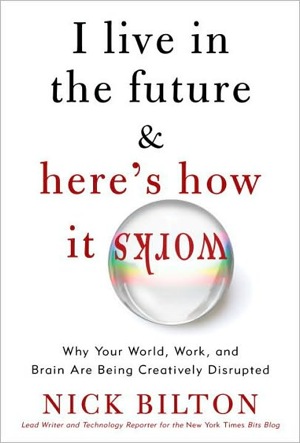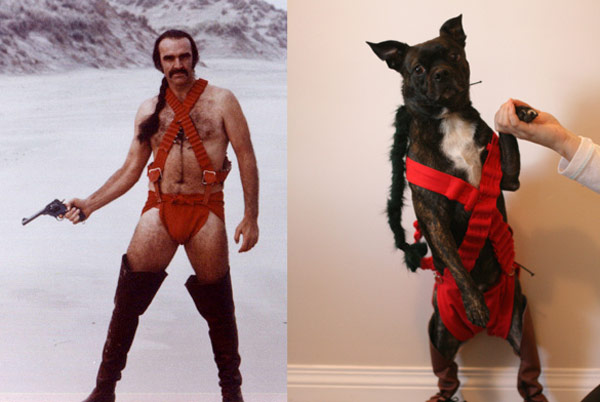
William Gibson's most recent novel, Zero History, was recently published (Cory called it an "exciting adventure that wakes you to the present-day’s futurism").
I asked William a few questions by email. Here are his answers:
The paperback edition of your newest novel, Zero History, is out. Now that Kindle sales top both hardbound and paperback book sales on Amazon, it doesn't seem as important to have a paperback release. Or does it?
I think I bought a total of maybe four new hardcover novels, as an undergraduate, so I still think of the hardcover as a sort of word-of-mouth trailer for the mass market paperback. And I still see people expressing impatience, on Twitter, that a given title isn't out in paperback. Maybe Kindle et al aren't quite that evenly distributed yet.
What things are keeping your interest lately?
The sheer surreality of the Republican presidential primary, Libya, Iain Sinclair's monolithic ongoing anti-Olympics project (Hackney, That Rose Red Empire and now Ghost Milk), the "gray man" concept in personal security, the culture of personal aerial drones, parts of the United States as newly undeveloped sub-nations and the foreign outsourcing thereof...
How have your interests changed? By that, I mean, what used to interest you but now doesn't? And vice versa?
I don't really lose interest in things I've been very interested in, but there's limited room on the working face.
Do you have a "daily carry?" If so, what are the things in it?
A very thin, almost weightless wallet, made of a material called Kuben (which is sort of like Dyneema but less fancy-looking) deployed in front pocket. (I had a walletectomy for a back issue; back-pocket carry is murder on the back, plus much less secure.) A steel-cable Muji keyring with keys and a SwissTech Utili-Key 6-in-1 tool (which looks like a key). A Montblanc roller-pen from before they become a luxury brand (I found one on eBay after reading Hiroshi Fujiwara's fascinating book Personal Effects).
What do you think of the DIY/Maker movement, with individuals now about to make 3D printed objects at home, and sharing 3D models for all sorts of things online?
My grandfather owned a small-town lumberyard, and old-fashioned hardware stores have always been among my very favorite retail environments. I grew up with the idea that most of the environment we actually inhabit is the result of human labor. Anyone who can make something really well, more or less from scratch, has my respect. So I see DIY/Maker activity as extremely healthy. I'm not sure that owning a machine that can make something more or less from scratch impresses me quite as much, but I have no personal experience of that yet.
What do you think of the way industrial design is going -- for cars, electronics, medical devices, etc.
Generally, I like the way those things are looking, but it's a rare day I see anything new that I *really* like. I saw a photograph of Dieter Rams' basement workshop recently. Man alive. Would I have liked to be a fly on the wall in there.
I'm not going to ask you about any specific movie development projects you have cooking, but I have general question -- Almost every fiction writer I know who has worked with the Hollywood movie industry has told me they hated the experience and hated the results. Has you experience been better?
Liking the Hollywood movie industry is like liking war. Some people do like war, though, and I've sometimes enjoyed my own experience of the Hollywood movie industry. People who haven't actually been there, been fully in it, with some paid role on which something actually depends, really have very little idea. One of the more oddly hellish things about it is that so many of its civilian consumers assume that they understand exactly how it all works. There's a huge subsidiary industry filmgoers pay to keep them convinced that they have insider knowledge, actual experience of the beast itself. They don't.
You don't really get it until you're in a situation in which some entity has invested sixty or seventy million dollars in something and seems to be in the process of deciding that your creative input may be endangering that investment. It's an experience that will definitely get your fullest attention.
I enjoyed your recent essay in Scientific American titled, "Life in the Meta-City." Can you talk about why you wrote this?
Thanks. They asked me. And I suppose writing for Scientific American was a sort of bucket list item! Plus I have always been interested in cities.
You have a great Twitter feed. What are your feelings about reading and participating in social media?
Glad you enjoy it. I find it completely ludic, pure play.
Twitter is really my only experience of social media, so far. I sometimes wonder what my life would have been like if I'd had access to some sort of agreeable social media in my early teens. I think I would really have liked it, so then I feel a little sorry for my younger self. Then I remember that all of that stuff might still be around, and I feel a huge relief that it isn't.
What do you worry about? I'm talking about loose nukes, global warming, economic meltdown, creeping fascism.
All of the above, and anything else in that general ballpark. As one does. Sometimes I remember that I evidently assumed that Ronald Reagan was probably about as weird as it was going to get; that that all seemed a bit over the top, a grave if semi-comic but blessedly temporary anomaly. That's scary.





Like this:
Like Loading...













